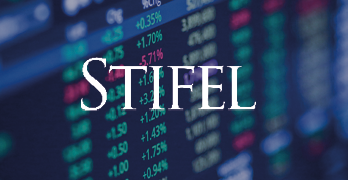BAI Index August 2023: Dog Days of Summer: Demand Still Soft and Capacity Lingers

Not much changed through July from August, with rates continuing to drag along the trough, alongside weak demand and overabundant capacity. We are in the midst of the second quarter earnings season and most forwarders to date continue to report double-digit volume declines and yield declines in the 30% or greater range. At this point in the cycle, we believe that experience is roughly commensurate with the underlying capacity market, since sell rates have now caught up with buy rates.
Indeed, July monthly readings from Shanghai to Europe and Shanghai to North America (BAI 81 and BAI 82, respectively) saw 59% and 46% year-over-year drop in pricing. Hong Kong to Europe and Hong Kong to North America (BAI 31 and BAI 32, respectively) fell 43% and 45% year-over-year. On a sequential basis, results have been relatively flat (most are actually still slightly negative) from June to July, grinding along the bottom as the destocking-driven import demand vacuum persists, and post-Covid capacity resurgence continues.
This earnings season, there has been a lot of focus on demand. Results have been weaker than expected, volumes softer than expected, and signs of an inflection more difficult to detect than we had anticipated. But we do feel, based on our conversations with management teams — both public and private — and our channel checks with shippers, that we have seen the bottom.
This earnings season, there has been a lot of focus on demand. Results have been weaker than expected, volumes softer than expected, and signs of an inflection more difficult to detect than we had anticipated. But we do feel, based on our conversations with management teams — both public and private — and our channel checks with shippers, that we have seen the bottom. That bottom may be more of a flat hull than a V-shape. So, things are not likely to get much worse from a demand perspective, in our view.
The situation could change meaningfully as the year progresses, but even as we exit a challenging second quarter, we see green shoots with consumer confidence and inflation abatement, which could swing the balance in favor of a modest peak versus a muted one.
However, that does not mean the rise off the floor will be brisk. We are modeling conservatively as our base case for peak season later this year. The good news is that the comp will be easier than it was in 2022 versus 2021. So while absolute freight levels probably will not be much to write home about, even a small holiday pickup would be an improvement on last year. We think that one of the key swing factors this year will be the level of confidence that retailers have in consumer demand, and whether they err towards caution in rebuilding stocks. The situation could change meaningfully as the year progresses, but even as we exit a challenging second quarter, we see green shoots with consumer confidence and inflation abatement, which could swing the balance in favor of a modest peak versus a muted one.
On the supply front, we continue to see excess cargo supply, which has been exacerbated by the influx of belly capacity. Pent up demand for travel remains robust, even with inflationary pressure, and passenger capacity has still not recovered to pre-Covid levels. So, there is more capacity yet to come. We believe this dynamic is most prevalent on transpacific lanes, with certain Asian markets having been slower to reopen, and thus slower to normalize on the capacity front. As a general matter, we anticipate that global cargo market oversupply will linger well into 2024, if not beyond. So, any tightening on the rate front will most likely need to come via demand improvement.
About Bruce Chan, Director and Senior Research Analyst covering Global Logistics and Future Mobility, Stifel
Bruce Chan joined Stifel in 2010. Based out of the Miami office, Mr. Chan is a Director and Senior Research Analyst covering Global Logistics and Future Mobility.
Bruce Chan can be reached at chanb@stifel.com. Opinions expressed are subject to change without notice and do not take into account the particular investment objectives, financial situation or needs of individual investors. For more information and current disclosures for the companies discussed herein, please go to the research page at www.stifel.com.
©2023 by J. Bruce Chan.